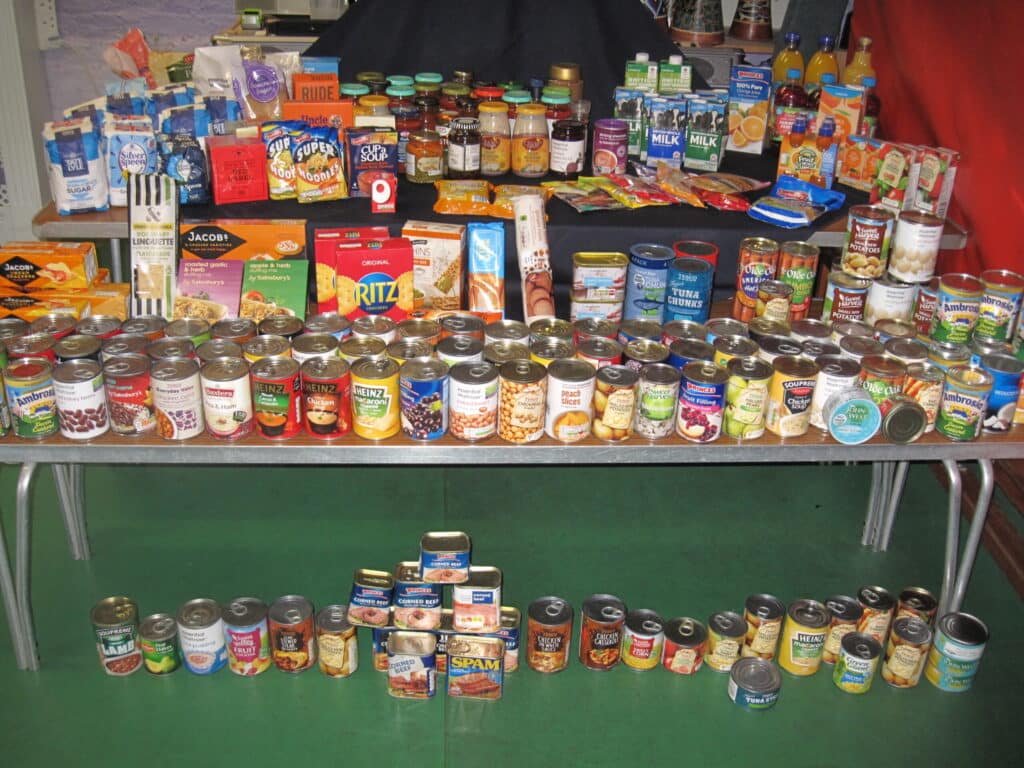![]()

![]()


We all remember the ago old tradition as kids of ‘Harvest Festival’ it involved sitting on a cold parquet floor in our school days with a tin of baked beans or something similar that mum or dad had given us to donate as an integral part of ceremony attached to what was once so much more than clearly out the pantry and stacking it up next to the climbing ropes on a balance bench covered with one of the head teachers old sheets. It was so much more than that as the British countryside shifted from the warmth of summer into the crisp embrace of autumn, communities came together to celebrate the harvest festival. This ancient tradition, rooted in the cycles of the agricultural year, was a time of gratitude and celebration, marking the end of the harvest and the gathering of crops that would sustain people through the winter. Held in late September or early October, the festival was often tied to the Christian church, with services giving thanks for the bounty of the land. But its origins go much deeper, into pagan customs where communities would pay homage to the earth and the spirits of nature for providing abundance.
As the chill of winter began to settle in, the British household would shift focus to the art of pickling and drying, two essential methods that allowed families to preserve the summer’s abundance. These techniques were not merely practical—they carried with them a deep sense of tradition, a way of ensuring that the flavours of the warmer months could be enjoyed even in the heart of winter. For those who lived by the rhythm of the seasons, pickling and drying were vital for stretching the harvest across the barren months when the land gave little.
Pickling was an especially revered process in the British winter pantry. Vinegar was the key to preserving vegetables, transforming them into bright, tangy accompaniments that could liven up even the simplest winter meals. Among the most commonly pickled vegetables were onions, with pickled onions gracing many a table alongside cold meats, pies, and cheeses. The sharp bite of a well-pickled onion was the perfect contrast to the richer, heartier foods of winter, and their long shelf life made them an ideal candidate for preserving.

Beetroots, too, were often pickled. Once boiled and sliced, they were submerged in vinegar with spices, their deep purple flesh taking on a sweet-and-sour tang. Beetroots were one of the most versatile ingredients for pickling, and their vibrant colour added a much-needed brightness to the winter table. Pickled beetroot was a common companion to roast dinners, salads, or sandwiches, and its earthiness survived the preserving process, bringing a taste of the autumn harvest into the darkest days of the year.
Cucumbers, while not native to Britain, had long been cultivated in the temperate climate and were often pickled as well. The classic pickled gherkin was a favourite in many households long before it graced a Big Mac, preserved in a briny solution with dill and mustard seeds, a sharp and satisfying crunch that added flavour to cold cuts or afternoon tea sandwiches. In some regions, even green beans and cauliflowers would be pickled, making use of any surplus crop that couldn’t be eaten fresh. The process of pickling was deeply personal—each household had its own recipes, handed down through generations, with slight variations in the spicing or vinegar strength that gave each jar its unique character.
But pickling wasn’t limited to vegetables alone. In regions where the orchards yielded heavily, fruits could also be pickled. Apples and pears, sliced and immersed in spiced vinegar, created sweet-and-sour condiments that paired beautifully with pork or poultry. Damsons—a small, tart plum—were often pickled whole, creating a jewel-toned treat that was both sharp and sweet, perfect for cutting through the richness of winter roasts or game meats.
Drying was another invaluable method of preservation, particularly for herbs and legumes. The British countryside, with its mild summers, lent itself well to growing pulses like broad beans and peas, which could be dried and stored for months. These dried pulses were a winter staple, rehydrated in soups and stews where they absorbed the rich flavours of the stock and herbs, adding texture and nourishment. Broad beans, in particular, had been cultivated in Britain for centuries and were often dried on the vine before being shelled and stored in sacks, ready for use when fresh vegetables were in short supply.
Peas, too, were dried and stored in abundance. Split pea soup, a winter favourite, was a comforting dish made from dried peas that had been harvested during the summer months. These peas, small and wrinkled, may have seemed unimpressive compared to their fresh counterparts, but when simmered slowly with a ham bone or vegetables, they bloomed into a thick, hearty soup that warmed the body on cold nights. The drying process, though simple, allowed for an inexpensive and sustainable source of protein, crucial for the long winter.
The drying of herbs was a tradition that filled kitchens with the fragrant aromas of late summer. Sage, rosemary, and thyme—the hardier, more robust herbs—were gathered in bunches and hung to dry in dark, airy cupboards. Their leaves, once dried, would be crumbled into jars, ready to infuse winter roasts and stews with their distinctive aromas. Sage was often paired with fatty meats like pork, its earthy flavour cutting through the richness, while rosemary added a woody, resinous note to roasted lamb or chicken. Thyme, delicate but persistent, found its way into almost every dish, from soups to savoury pies.

Even more delicate herbs, such as parsley and mint, could be dried, though they lost some of their vibrancy in the process. Still, a handful of dried mint stirred into a lamb stew or crumbled into a sauce could evoke the memory of fresh summer herbs, their flavours still lingering even in their dried form. For tea drinkers, dried mint and chamomile became soothing, aromatic brews, a simple pleasure that brought warmth and comfort as the nights grew longer.
In some homes, apples and pears were also dried, sliced thin and laid out in the oven or by the hearth until their moisture evaporated, leaving behind chewy, concentrated sweetness. These dried fruits were often added to porridge or used in baking, bringing a hint of summer’s sweetness to the dark days of winter. Dried plums, or prunes, were another favourite, their rich, caramel-like flavour intensified by the drying process. These dried fruits, with their long shelf lives, became staples of the winter pantry, offering a burst of natural sweetness when fresh fruits were long gone.
Summer and early autumn fruits were also gathered and painstakingly converted into jams, preserves, marmalades and Jellies in kitchen to enjoy as sweet treats through the cold harsh winter. With an abundance of wild foraged and easily accessible fruits that were accessible to all. And the ultimate sweet treat and incredibly important ingredients was honey. For centuries and since antiquity, honey was not only a sweetener but also an important preservative. The beehive provided a natural, long-lasting source of sugar and could be used to preserve fruits or make mead, a fermented honey drink. Honey was also used medicinally during the winter months to soothe sore throats and colds.
The winter pantry, with its rows of pickled, preserved and dried ingredients, represented more than just sustenance—it was a testament to the ingenuity and resourcefulness of those who lived in harmony with the seasons. Each jar of pickled vegetables, each bag of dried herbs and pulses, was a reminder of the abundance of the land, carefully preserved to sustain life through the cold and the dark. Even when the fields were frozen and the trees bare, the winter pantry ensured that the essence of summer could still be enjoyed, its flavours woven into the heart of the British winter diet and as we look to a more sustainable future these methods of old will be key to a local and sustainable menu all year round.
Here are eight simple yet delicious dressings that pair perfectly with fresh oysters, each designed to complement their natural flavour without overwhelming it.
Read moreThis year, why not surprise your guests with these five exquisite seafood-inspired recipes that are as celebratory as they are delicious?
Read moreAlcohol free cocktails made for all tastes and still using British coastal ingredients.
Read more
